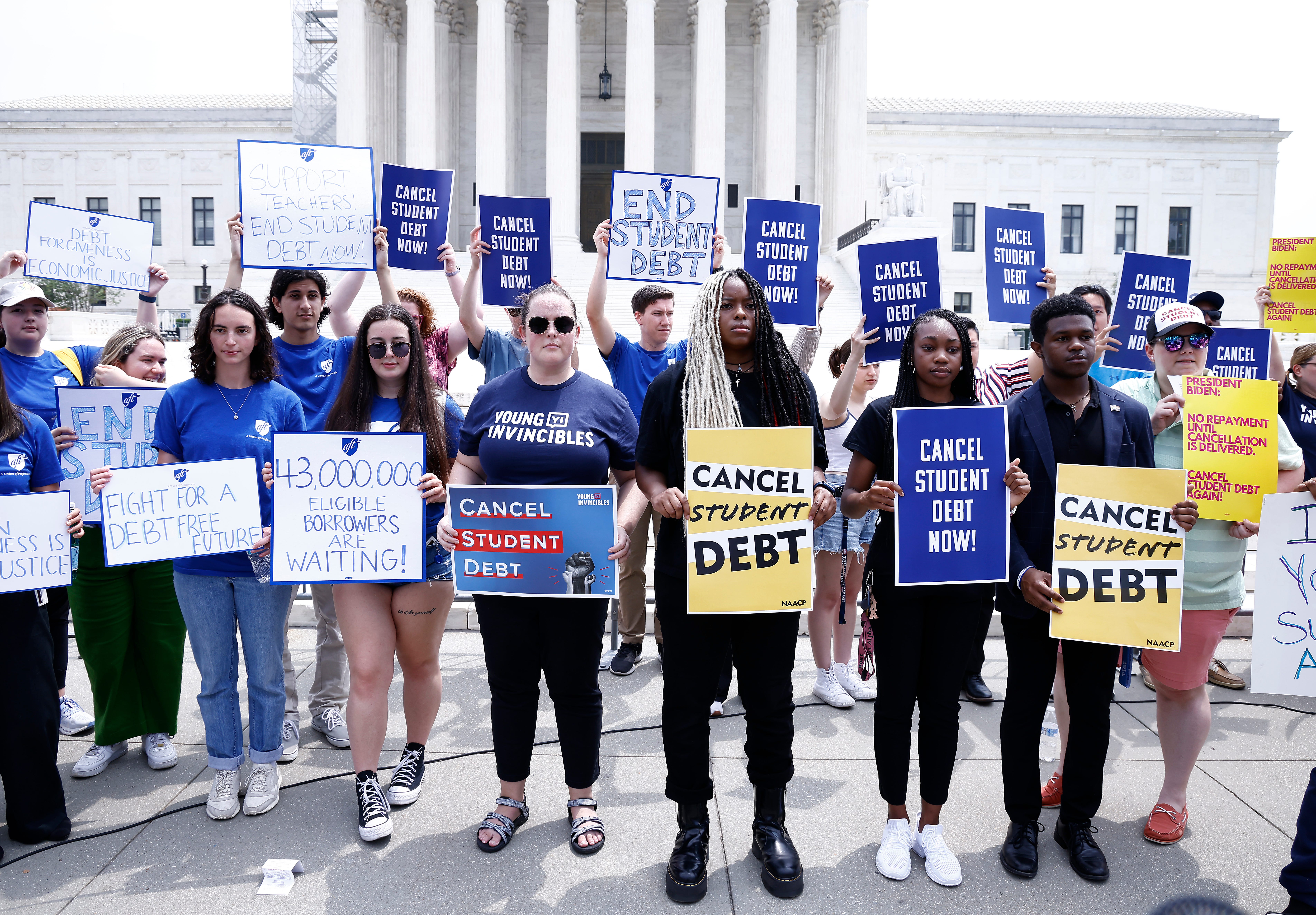
After a federal judge dismissed a lawsuit seeking to block student loan forgiveness, more than 800,000 borrowers from all over the U.S. are in line see their loans erased. The student debt in question is worth about $39 billion and was owed by borrowers who’ve been making 20 to 25 years worth of payments.
The borrowers involved in these plans for forgiveness include those with Direct Loans or Federal Family Education Loans held by the department, including Parent PLUS loans. Many of the borrowers affected are likely 50 or older. An estimated 9.2 million borrowers fall into this category.
If you don’t qualify for loan forgiveness through these programs, a career in public service may be the answer to student debt cancelation.
Which jobs will forgive your student loans?
The Public Service Loan Forgiveness Program encourages employment in sectors that benefit the public. Some examples of careers that qualify for loan forgiveness include:
- Emergency management
- Medical professionals, including nurses or doctors\
- Law enforcement officers
- Early childhood educators
- Public health professionals
- Social workers
The public service loan forgiveness program cancels the remaining balance of loans for people working full-time government or not-for-profit jobs. Here’s the catch: Qualified individuals must also make 10 years of consecutive payments on their loans.
Full-time teachers at low-income elementary and secondary schools or people working at educational service agencies may be eligible for $5,000 to $17,500 in student loan forgiveness under the teacher loan forgiveness program. Highly qualified math, science and special education instructors are eligible for up to $17,500, according to the Department of Education. Teachers must be working for five consecutive years to qualify.
In 2021, over 1 million Americans were qualifying borrowers under the public service loan forgiveness program, according to the office of Federal Student Aid. But the program faced major criticism for being difficult to navigate. Some borrowers were denied loan forgiveness after making what they thought were a decade’s worth of qualifying payments.
In 2022, the Biden administration temporarily expanded eligibility, in order to include borrowers who had loans that didn’t originally qualify.
What else qualifies you for student loan forgiveness?
If teaching or a career in public service is not appealing to you, there are a few other cases where borrowers may qualify for discharged loans. Death, false eligibility for a loan and in some rare cases, bankruptcy, will qualify a borrower.
Borrowers with Federal Perkins loans have access to a separate forgiveness program. Volunteer service and some employment (including education, firefighting, the military, or the Peace Corps) are qualifying factors. School closure, disability or being misled by your school are other qualifying factors for loan forgiveness.
$39 billion in debt erased:With lawsuit dismissed, student loan debt forgiveness begins for 800,000 borrowers
What’s next for loan forgiveness:Supreme Court strikes down plan to forgive student loan debt; Biden vows to use alternate path
Loan discharges begin
Soon after the judge’s order was posted Monday, the Education Department said loan forgiveness for the borrowers in question had begun and would affect people in every state.
The ruling comes two months after a major blow to the Biden administration: The Supreme Court ruled against Biden’s plan for large-scale student loan forgiveness. The now-defunct proposal would have forgiven debt for more than 40 million borrowers.
“Today, the Biden-Harris Administration is beginning to discharge loans for 804,000 borrowers who never received the forgiveness they rightfully earned through decades of payments,” Education Secretary Miguel Cardona said. “We are standing up for borrowers who did everything right, but whose progress toward forgiveness went uncounted due to past administrative failures that the Biden-Harris team has worked tirelessly to correct.”